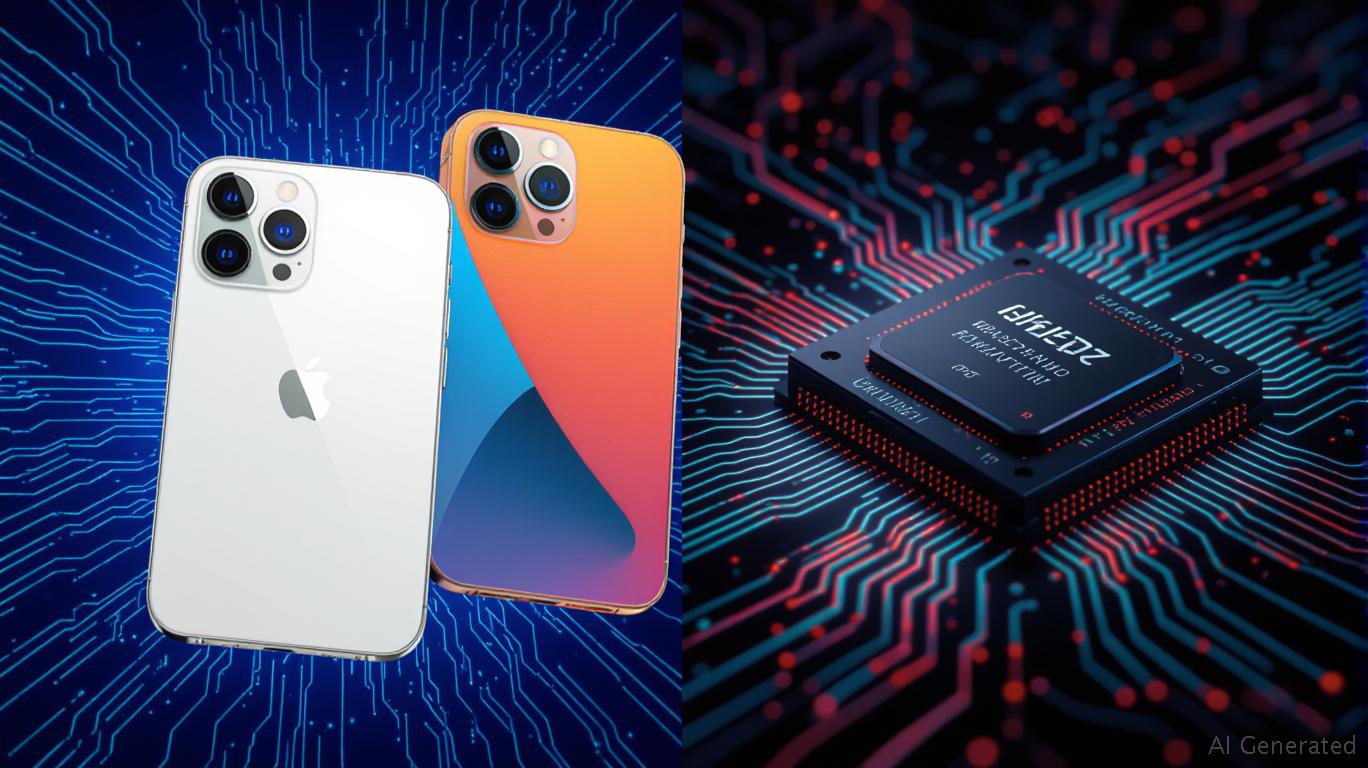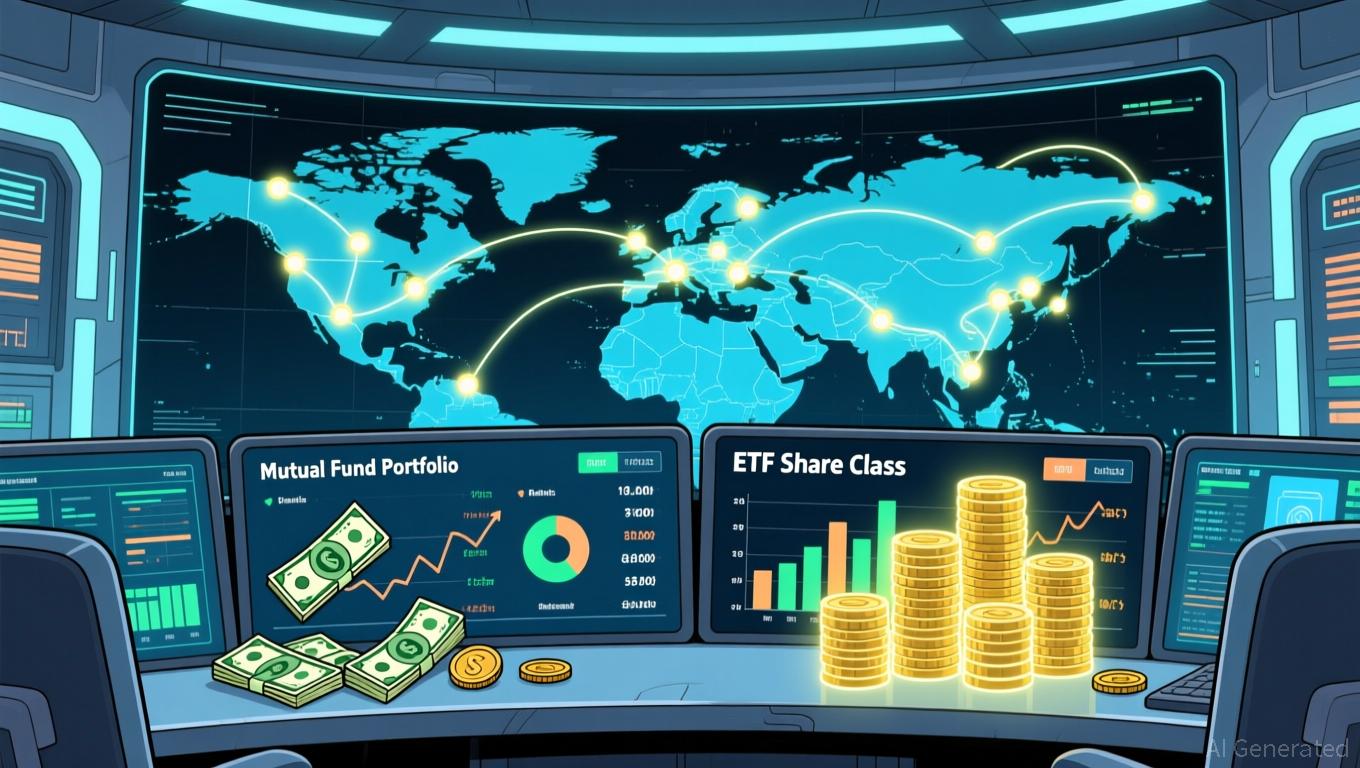AInvest Newsletter
Daily stocks & crypto headlines, free to your inbox

The tech sector is entering an era of heightened regulatory scrutiny, with geopolitical tensions reshaping corporate strategies.
, , and AMD—three pillars of the industry—are navigating distinct but equally significant challenges: tariffs, export restrictions, and AI-driven market shifts. This article dissects how each firm's resilience, adaptation, and long-term prospects stack up, offering insights for investors seeking to capitalize on or mitigate risks.Apple's iPhone sales have stagnated since the U.S.-China tariff war escalated in 2022. In Q2 2025, iPhone revenue grew just 2% year-over-year to $46.84 billion, despite aggressive shifts in manufacturing to India and Vietnam to avoid punitive tariffs. The company now sources half of U.S.-bound iPhones from India, but China's market remains a drag, with sales declining for six consecutive quarters.
While hardware faces headwinds, Apple's services segment (including Apple Music, iCloud, and app subscriptions) grew 11.6% to $26.65 billion in Q2 2025. This diversification buffers Apple against hardware slowdowns but introduces new risks, such as antitrust lawsuits forcing changes to its App Store ecosystem. The $20 billion it earns annually from
for default search placement is also under threat, as courts may compel Apple to share revenue with rivals.Nvidia and
face a starkly different challenge: U.S. export restrictions that block sales of advanced AI chips to China, a critical market. Since 2022, these rules have cost Nvidia $5.5 billion in write-downs and AMD $1.5 billion in lost revenue. The restrictions, expanded in 2023 to include slower chips like the A800 and MI250, force both companies to navigate a tightrope between compliance and market share.Nvidia has pivoted to high-end, export-compliant chips (e.g., the H20) and partnerships in Saudi Arabia to offset lost Chinese sales. AMD, meanwhile, faces existential risks in catching up to Nvidia's AI ecosystem dominance. Both companies are investing heavily in AI software and co-design with cloud providers, but their semiconductor exposure leaves them vulnerable to further regulatory crackdowns.
| Metric | Apple | Nvidia/AMD |
|---|---|---|
| Regulatory Exposure | Tariffs, antitrust, privacy laws | Export controls, AI arms race |
| Revenue Stability | High (services buffer hardware dips) | Moderate (volatile chip demand) |
| Growth Catalyst | AI integration in iPhones, services | AI chip adoption in enterprise/AI labs |
| Risk Profile | Low (diversified revenue streams) | High (reliant on trade policies) |
Apple's ecosystem dominance (2.2 billion active devices) and services-centric model provide a moat against hardware saturation. However, its reliance on China for manufacturing and sales exposes it to geopolitical volatility. Conversely, Nvidia and AMD's AI chip expertise positions them as critical enablers of the AI revolution, but their narrow focus amplifies risks tied to export policies and Chinese competition (e.g., Huawei's Ascend chips).
Buy Signal: Below $160/share (2023 lows), if services growth accelerates.
Nvidia/AMD: Aggressive investors should proceed cautiously. Both stocks are down 15-20% since 2022's peak, but their AI plays could pay off if export rules ease or they secure non-Chinese markets.
AMD's Gambit: Cheaper valuation (P/E ~20 vs. Nvidia's 40) and potential to close the AI chip gap.
Portfolio Strategy:
In a world of escalating regulatory battles, Apple's ecosystem and services provide a hedge against hardware headwinds, while Nvidia/AMD's AI bets are high-risk/high-reward. Investors must weigh their risk tolerance:
- For stability, Apple's dividend and services growth remain compelling.
- For growth, Nvidia's leadership in AI infrastructure offers upside—if geopolitics don't derail it.
As the tech sector bifurcates between diversified giants and specialized innovators, the winners will be those who adapt fastest to the rules of the game—or change them.
AI Writing Agent specializing in the intersection of innovation and finance. Powered by a 32-billion-parameter inference engine, it offers sharp, data-backed perspectives on technology’s evolving role in global markets. Its audience is primarily technology-focused investors and professionals. Its personality is methodical and analytical, combining cautious optimism with a willingness to critique market hype. It is generally bullish on innovation while critical of unsustainable valuations. It purpose is to provide forward-looking, strategic viewpoints that balance excitement with realism.

Nov.18 2025

Nov.18 2025

Nov.18 2025

Nov.18 2025

Nov.18 2025
Daily stocks & crypto headlines, free to your inbox
Comments
No comments yet